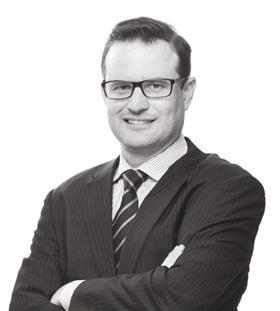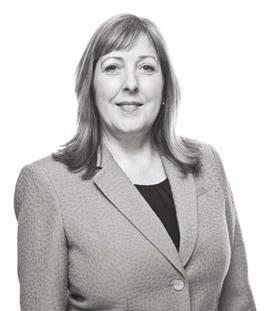So much achieved, so much more to do
James Gifford, Executive Director

In November 2003, between Master’s and PhD, I thought an internship at the UNEP Finance Initiative in Geneva in winter sounded like a great way to spend four months. Well, here we are 10 years later, and I couldn’t have asked for a more amazing ride.
At that time, UNEP FI, set up in 1991 as a partnership between the United Nations Environment Programme and commercial banks with the aim of bringing environmental impact into their operations, under Paul Clements-Hunt, was working with leading brokers to explore how ESG issues can be material to investment returns. In the US meanwhile, Gavin Power at the UN Global Compact had kicked off the “Who Cares Wins” initiative to engage mainstream financial institutions on environmental, social and governance (ESG) issues. I started working with Jacob Malthouse, former head of investment at UNEP FI, on ideas for how the UN could advance responsible investment. One of these was a set of stewardship principles for pension funds based on UN norms. The working title was “Principles for Responsible Pension Fund Engagement”. Paul hired me to take the idea forward. It quickly took on the broader ESG integration agenda, and in January 2004, we set out to develop what would become the Principles for Responsible Investment.
A year later, Kofi Annan, secretary general of the UN at the time, invited the heads of 20 of the world’s largest asset owner institutions to UN Headquarters in New York to begin the process of drafting a set of principles for investor responsibility. Working with Mercer, we convened a year-long consultation and drafting process, led by these 20 asset owners and supported by an expert group of asset managers, academics, service providers and NGOs. This process resulted in the launch of the Principles for Responsible Investment in April 2006.
With our first 50 signatories, one employee and a big push from our UN partners, we established the PRI Secretariat and got to work.
Our first priority was the PRI Engagement Clearinghouse. Building a platform for collaborative shareholder dialogue with companies was, from the very beginning, a core part of the strategy. Most listed companies have a diff use shareholder base, with no one shareholder having more than a tiny proportion of total equity. If we were to make the capital markets function, shareholders needed to monitor companies and hold them to account. The only way this was going to happen was for shareholders to come together, pool their resources and infl uence, and have structured dialogue with companies. From day one of the PRI, building a culture of investor collaboration around dialogue with companies was a key PRI goal (Principles 2 and 5). In the years since, more than 410 institutions have participated in 480 collaborations. The Clearinghouse’s staff of seven now supports as many as 15 collaborations at any one time
Our next priority was accountability and transparency. Principles are of little value unless those who sign up are accountable and transparent. In 2007, we put in place the first PRI Reporting and Assessment framework. This process has, not without controversy, dramatically fasttracked the development of reporting indicators and assessment methodologies for responsible investment capability and progress. While reporting in systematic ways involves a significant effort, it is one of the best learning tools there is. I believe this annual exercise, along with what I expect will be its use by asset owners in evaluating their managers, could be the single most important driver of responsible investment in the medium term.
Before the PRI, the number of organisations reporting on responsible investment in any systematic way could be counted on two hands. In 2007, 104 signatories participated in the first PRI reporting and assessment process. The next year, 156. Then 276, 433, and in 2011, 545. Around half of these were also reporting in full to the public. In 2014/2015, after moving to a mandatory transparency framework, we expect to reach 1,000 investment institutions reporting their responsible investment progress in quite some detail to the public. This will mark a dramatic increase in transparency and accountability for the whole investment sector.
Our third key priority from the beginning was to drive responsible investment across asset classes and internationally. When the PRI was launched, responsible investment was limited to listed equity and real estate in a few markets. We set up work streams for most asset classes and investment approaches and established networks in Brazil, Australia, Germany, South Africa, Japan and Korea. PRI’s work encouraged the private equity industry to take on the responsible investment agenda quickly. We have gone from only a couple of private equity firms as signatories in 2008 to more than 120 today. Signatories have also worked on looking at how responsible investment might be employed in the sovereign and corporate debt markets, where only a few asset managers have so far applied responsible investment approaches.
Underpinning these three priorities was the strategy of empowering and mobilising asset owners, who sit at the top of the investment chain. We put asset owners (the great majority of which are non-profit pension schemes) at the heart of the drafting process and the PRI’s governance. These organisations recognised that the PRI could help them fulfil their fiduciary duties and the expectations of their members, and started putting the Principles into practice. The investment management industry is now receiving more ESG requirements in requests for proposals from potential clients than ever before. It is starting to move from “have you signed up?” to a genuine evaluation of responsible investment implementation.
The PRI has become the industry standard for responsible investment, and non-signatories are conspicuous by their absence. Most importantly, we have seen clear and measurable increases in responsible investment activity within our signatories, with more and more professional RI staff being hired, more requests for proposals requiring ESG capabilities, and more collaboration among signatories. We are seeing responsible investment moving from niche to mainstream.
While this is the end of an era for me, it is still the beginning for the PRI. There is so much work to do. While we have made impressive progress, in many markets and within many organisations, responsible investment is still marginal, and buy-in is lacking. There is a lot of talk, and not quite as much action. There is a lot of box ticking. There are too few examples of responsible investment being embedded in the core strategy of organisations. Shareholders are not active enough in engaging in dialogue with companies and, despite the evidence of their material value, ESG issues are still seen as irrelevant by many mainstream portfolio managers. Asset owners are making progress in the request for proposal stage, but in most cases dropping the ball in their monitoring of investment managers. And there is not enough recognition at the most senior levels of the investment sector that this agenda represents the future of how investment will be done.
The PRI is well placed to take on these challenges. It has global reach, a critical mass of investor capital behind it, leadership from the most respected institutions and a strong executive team with the addition of Managing Director Fiona Reynolds and Director of Policy and Research Helene Winch. The new PRI strategy, with a renewed focus on addressing the barriers to a sustainable fi nancial system, also puts the Initiative in a strong position to deliver the change required to create a fi nancial system that is truly sustainable – in all senses of the word.
I am immensely proud to have led the organisation from the inception of an idea to the institution we have today.
Thank you to you, the signatories, for your amazing support over the years and for your commitment to responsible investment within your organisations. Thank you to the PRI team, whose hard work, enthusiasm and passion is responsible for all we have done and will do at the PRI. Thank you to our UN partners at the Global Compact and UNEP FI for supporting me and backing the PRI as a unique partnership between the UN and the investment sector. And thank you to those signatories who have stepped up to serve on the PRI’s governance bodies, in particular the Board and Council. You have put enormous hours into building this institution into what it is today and you should be proud of what we have achieved.
While it is sad to say goodbye, I very much look forward to seeing the PRI prosper over the next 10 years and fulfil its mission of making responsible investment part of the mainstream, and helping to create a more sustainable financial system that delivers its financial goals while at the same time protecting and preserving our precious environmental and social assets.
Reinforcing the PRI to embed responsible investment
Fiona Reynolds, Managing Director

James Gifford has been the foundation of the PRI’s early formation and success and there is no better place to start my report than by paying tribute to him. James’ role in PRI’s history will never be forgotten and I wish him every success in the future. The PRI will not be the same without him.
I welcome our new signatories on board. The continued growth in our signatory base is a further indication of the increasing global momentum to embed environmental, social and governance (ESG) analysis as a core factor in investment decisions, an achievement that the PRI can be proud of.
As we prepare for the next phase in the PRI’s development, there is no doubt that we have our work cut out for us. We need to assist a growing and diverse signatory base, a base that includes both developed and developing countries and groups of signatories who are at very diff ering stages of their responsible investment journey. Doing this successfully is both challenging and demanding. But I look forward to playing a part in executing the new Strategic Plan developed by the Council and Board and to contributing to plans as we take the PRI forwards into its second decade.
In my initial six months with the PRI, I have met with a number of signatories and stakeholders in countries around the world. The two most common questions I am asked are: ‘”What brought you from Australia to the PRI?” and “Where do you see the PRI heading over the next 10 years?”.
My answer to both questions is the same. My interest in long-term responsible investment and desire for the PRI and its six Principles to become enmeshed across international investment and capital markets is what brought me to the PRI and over the next decade I hope to see this realised. This interest has come about from almost 20 years of working in the Australian pension system and a growing realisation that as it doubles from $A1.6 trillion now to a projected $A3.5 trillion by 2017, that mediumsize economies can add their voices to those of the US, Europe and other big economies in seeking to improve the governance of global capital.
I fundamentally believe that as the size of the pool of global pension fund assets continues to grow, it is right to expect the increasing weight of workers’ capital should be a force for making global markets and investment practices sustainable.
It is right that many millions of workers expect those in the privileged position of acting as custodians of that capital should do no harm in how they invest. Returns do not need to come at the expense of environmental sustainability, workers’ rights, security and good governance.
Externalities have a habit of eventually forcing themselves into boardrooms and onto balance sheets. The PRI itself will need to grow and mature to meet the mounting demands of the many and varied signatories across the globe in an environment increasingly marked by investment complexity, volatility and risk.
While I have been impressed by the commitment and determination of the staff at the PRI who operate at a very high level despite a narrow resource base, there is no doubt that to take the organisation and the achievement of its objectives to a new level we need to expand our team and add further depth to the organisation. This involves both additional talent and financial resources.
Having been heavily involved in public policy development in Australia over many years, I am looking forward to welcoming both Helene Winch to our team as Director of Policy and Research and Sagarika Chatterjee as our new Senior Responsible Investment Specialist. Their experience will help the PRI add further substance to its voice across international policy forums.
As you will see refl ected throughout this report, it has been an intense year at the PRI, with signatories active in a number of successful collaborative global engagements, particularly around issues such as anti-corruption. We have released a raft of new publications and guidance documents aimed at assisting signatories in implementing the Principles across all asset classes. We have a growing number of cross border steering committees and working groups and we continue to grow our global networks.
There is no doubt, however, that the largest and most important project we have worked on over the last 12 months has been the new PRI Reporting Framework. Taking this project from pilot to launch has seen the biggest consultation program ever undertaken by the PRI. The project has not been without controversy or criticism; this is neither unexpected nor unwelcome. Healthy debate and robust scrutiny is essential to good policy development. However, developing transparency and accountability around implementing ESG issues is fundamental to the success and credibility of the PRI initiative. Let me take this opportunity to thank Lorenzo Saa, Head of Reporting and Assessment, his team and all staff involved for their dedication. I am very proud of what has been achieved.
I would also like to thank staff , signatories, the Advisory Council and the Board for their warm welcome to the PRI. It’s been a fast-paced period absorbing all aspects of the PRI including its governance and operations. I would particularly like to thank Glen Saunders, the PRI Association Board Chair, for his guidance and input and again thank James Gifford.
In looking to the future of the PRI, we will remain indebted to James for his foresight and leadership.
I look forward to meeting many of you at PRI in Person in Cape Town and to being involved in an exciting new chapter in the PRI’s development.
Downloads
Annual Report 2013
PDF, Size 3.04 mb







